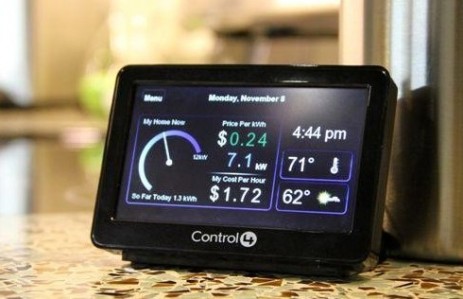 Feedback: It works for robot monkey arms and Scientology auditing, so shouldn’t it work to help you save electricity? Networking company Silver Spring Networks and Oklahoma Gas & Electric think so (and so do we). They’ve teamed up for a year-long experiment in Norman, Okla., to test smart grid solutions, allowing users to get feedback on their energy consumption using different technologies and pricing plans. The result: The right combo of gadget and pricing plan helped people cut peak household energy use up to 57 percent.
Feedback: It works for robot monkey arms and Scientology auditing, so shouldn’t it work to help you save electricity? Networking company Silver Spring Networks and Oklahoma Gas & Electric think so (and so do we). They’ve teamed up for a year-long experiment in Norman, Okla., to test smart grid solutions, allowing users to get feedback on their energy consumption using different technologies and pricing plans. The result: The right combo of gadget and pricing plan helped people cut peak household energy use up to 57 percent.
Energy-tracking technology saves: Smart thermostats, which can self-adjust based on energy needs, prices, and overall demand, ran off with the gadget crown. That’s the group that used 57 percent less energy at peak times. But some of the 2,500 homes in the study also used web portals and simple energy use displays — cheaper solutions than the smart thermostats that still make it easy to track your energy consumption — and they cut their usage, too. The households in the experiment cut their peak consumption between 11 and 33 percent on average.
Knowing how much energy costs made a difference, too: The pricing plans in the test helped users shift their energy consumption to off-peak, i.e. cheaper, periods. The experiment looked at two pricing plans, one based on time of day and one based on real-time demand. Customers on the second option, known as “variable peak pricing,” used 1 percent more energy during low-price (i.e. low-demand) periods and 33 percent less during high-price periods. This helps smooth out energy usage spikes, plus of course it lowers costs.
Further bulletins: Silver Spring and OG&E are recruiting more participants and will be completing another year of study, plus they’ll be releasing more analysis of the first wave of results. Their results could help other utility providers decide how to provide energy plans and feedback technology that will help people use energy more efficiently.



